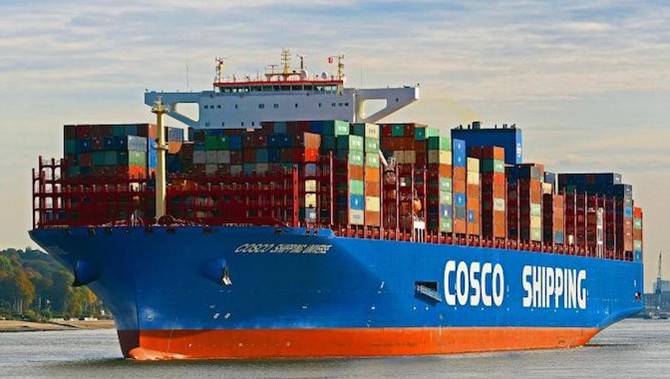Long-term ocean freight rates climbed yet again in August, edging up 4.1% month-on-month to stand 121.2% higher than this time last year. The latest global data, crowd sourced by Oslo-based Xeneta XSI® for its Xeneta Shipping Index appears to show that, despite softening spot rates, uneven demand and on-going supply chain issues, the world's top carriers remain on course for another bumper year of profits.
New long-term contracted rates are starting to drop on key trading corridors, following on the heels of declining spot prices, says Xenata, however, due to the fact they're replacing expiring agreements with considerably lower rates, the average paid by all shippers is still climbing. The question is, for how long?
“There's no doubt the major carriers have had it their way in negotiations for some time,” notes Patrik Berglund, Xeneta CEO. “The spectacular results they saw in 2021 will no doubt be repeated, and even bettered, this year, as seen by the huge profits that defined many Q2 financial reports. But there is a sense that change is in the air.”
“Volumes are dropping and, as expected, long-term rates are beginning to follow the trend set by the spot market. When you add in an uncertain macroeconomic outlook, continuing supply chain issues – such as the industrial action we've seen occurring, or threatened, in major ports in Germany, UK, and the US – and disruption in China due to the zero-COVID policy it's an unpleasant cocktail for the industry to swallow.
“In addition, you also have problems seemingly exacerbated by climate change, with low water levels impacting both power and factory production, as well as hinterland logistics chains. How will this challenge the longer-term outlook for carriers that have begun to look ‘bulletproof’?”
For the time being, however, the latest container rates intelligence follows a development path well-trodden over the last couple of years. According to the XSI®, all major indicators, across all key routes, are still resolutely pointing upwards.
In Europe, the import benchmark grew by 2% month-on-month, an 82.6% increase against August 2021. Exports were even stronger, climbing 7.3% from July. Exports out of the far East showed a 2.7% rise across August and have now rocketed by 90% this year alone. The curve in imports has not been so precipitous in 2022 (climbing by 40.4% this calendar year), but the last month saw a strong, 4.3% rates rise.
The US is an interesting market, states Mr Berglund, as the shift in volumes from the West Coast to the East simply transfers an issue it was conceived to solve.
“Carriers and shippers looking to avoid West Coast port congestion moved East and, lo and behold, the congestion issues shifted coasts too. We now have a situation where schedule reliability is improving in the West, while container rates fall, whereas the opposite is true of the East. However, do stakeholders want to risk moving back West, especially when unresolved union talks may threaten any perceived benefits?”
Source:
Hong Kong Maritime Hub
The opinions expressed herein are the author's and not necessarily those of The Xinde Marine News.
Please Contact Us at:
media@xindemarine.com


 Ningbo Containerized Freight Index Weekly Commentar
Ningbo Containerized Freight Index Weekly Commentar  Ningbo Containerized Freight Index Weekly Commentar
Ningbo Containerized Freight Index Weekly Commentar  Ningbo Containerized Freight Index Weekly Commentar
Ningbo Containerized Freight Index Weekly Commentar  BIMCO Shipping Number of the Week: Bulker newbuildi
BIMCO Shipping Number of the Week: Bulker newbuildi  Ningbo Containerized Freight Index Weekly Commentar
Ningbo Containerized Freight Index Weekly Commentar  Ningbo Containerized Freight Index Weekly Commentar
Ningbo Containerized Freight Index Weekly Commentar